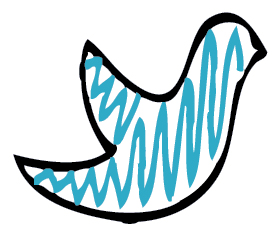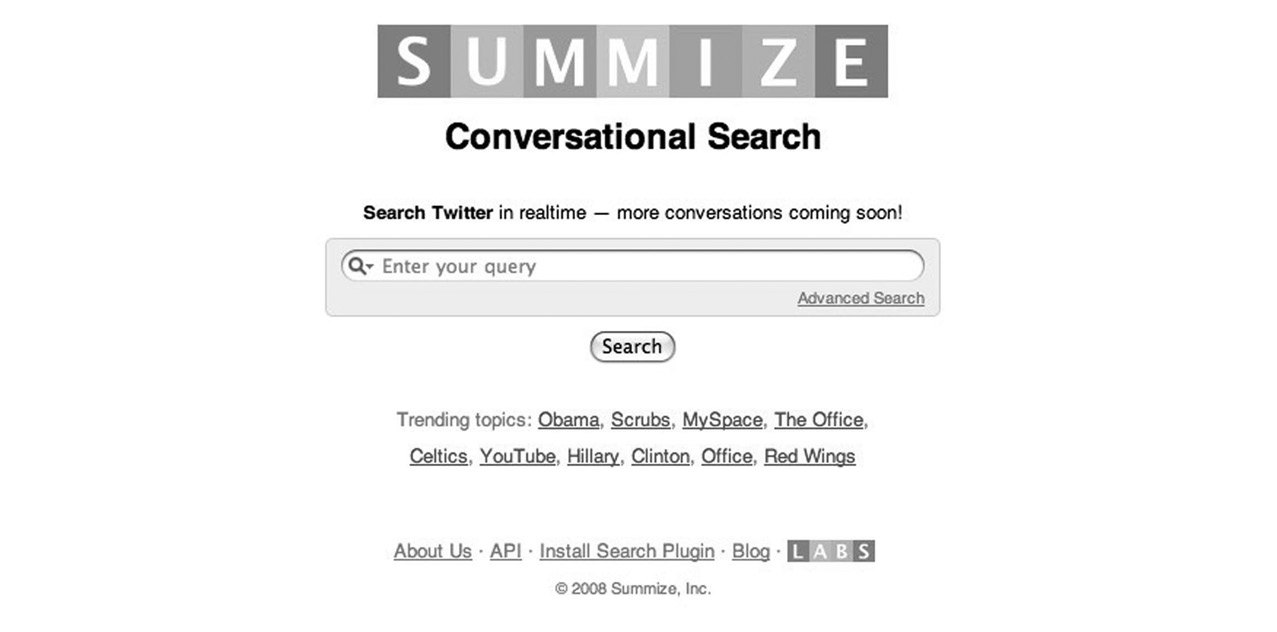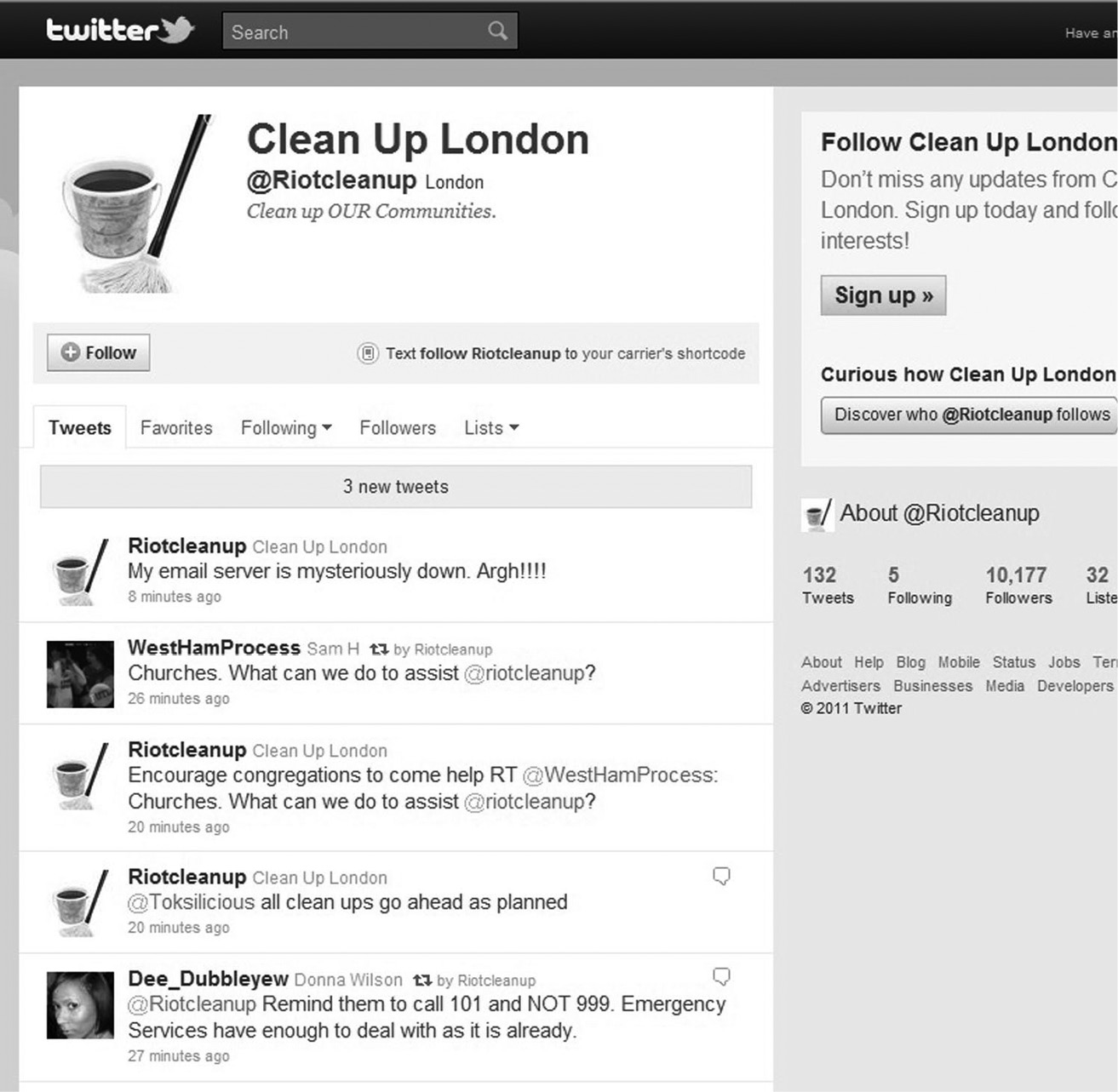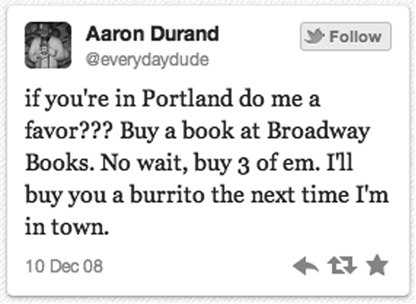Chapter 1
A Twitter-Centric Landscape
“That I am touch’d with madness! Make not impossible that which seems unlike: ’tis not impossible.”
Measure for Measure

And for some it was just that: a decent into madness.

I was one of those people who, like so many, found my introduction to Twitter a perplexing one. I couldn’t quite get my head around why I would need a service that would allow me to send a message alerting others about my particular choice of breakfast cereal. An ideology based around what’s basically an online SMS service? Madness indeed!
To Tweet — Perchance to Dream
The one thing you can say for certain about Twitter is that it makes a terrible first impression. But, as millions have discovered, it turns out that Twitter has an unexpected depth, coined by the writer Clive Thompson, as “ambient awareness.” A strangely satisfying glimpse into those naked social segments of others, like a virtual peephole; but one where the observer knows he’s being watched and enjoys the attention.
Twitter has dramatically transformed the way in which new ideas are shared and spread. News and information that would traditionally have taken hours, days, or even weeks to go from one location to another can now occur in seconds Twitter’s power is both an ally to democracy and a mortal enemy to those governments and corporate entities who have created and held on to their power by controlling the information we mere mortals receive.
Because of the power of the tweet, the spreading of an idea, or of news occurring somewhere in the world can no longer be blocked. During the Iranian elections, for example, the Iranian government attempted to control communication and block any images of what was occurring in Iran from making their way to the general public. But they were never able to control all the information and images that were being seen by the world in real-time. Similarly, when an earthquake rocked the country of Haiti, not only were images from the torn country in the aftermath of the quake being tweeted around the world, but commentaries and opinions of what people were seeing were being read, heard, and readily retweeted.
Let’s face it, the psychology of Twitter’s appeal is enough, in itself, for a volume or two, but what’s turned out to be the most interesting aspect of the platform is the way in which it’s been embraced and expanded at such an extraordinary speed, to provide functionality that its creators never dreamed of. It’s not only about what Twitter’s doing to us anymore; it’s about what we’re doing to it!
The Shaping of the Personal Twitterverse
It’s hard to comprehend that, when Twitter was first launched as a platform, there was no personal reply system in place. In fact, it was the early adopters’ desire to reply to individual users that first created the @username tweets that are now a fundamental part of the service. Twitter had always been intended to be social but now it was becoming personal.
The other hugely important key to Twitter’s continuing growth lies in the popularity of its application programming interface, or API, which allows programmers to develop software that interacts with Twitter.
Suddenly there was a need to tweet about anything and everything. New Twitter applications made it possible for unborn babies to tweet from inside the womb and for houseplants to tweet when they needed watering. All at once, the possibilities for connection seemed limitless and we found ourselves wondering how we every survived without it.
One of the biggest wake-up calls to the developers regarding what Twitter was capable of was brought about by the adoption of the API into an online Twitter search engine called Summize (see Figure 1-1). The program came up with a clever way of peering through Twitter’s vast data stream using keywords — topic, person, or location-based — to find out what was being shared about them, and could be used to show contextual advertising along with the results it produced. Summize’s ability to monetize conversations without being intrusive was something of a “Eureka!” moment for Twitter, which immediately saw a new revenue direction for the platform and took no time at all in purchasing Summize, along with its ideas.
Figure 1-1
Summize allowed users to search Twitter in real-time to provide greater value to the platform.

Communal Discovery: For Better or for Worse
Another incredibly powerful way in which Twitter has been shaped by the public to become far more personal is by that great influencer: communal discovery. We have an innate need to be a part of something greater than ourselves and to play a part in the events that shape our worlds. The ability for the platform to be used to unite common causes for good is a monumental one, but to any positive there is a negative force (akin to good versus evil). For Twitter, that negativity came in the form of it being used to spread discontent and a call to violent action amongst a particular group of its users. In the case of the London riots of 2011, Twitter was accused of provoking the rioters into action by allowing them to converse and rile their intentions through their tweets. But what is even more interesting is how Twitter was also used to disprove many rumors.
“Tiger has been let out of London Zoo and is now loose in Camden. Not joking,” tweeted one user, embellishing a story that rioters had released some of the animals at the London Zoo.
“They’re burning down London Eye!!!! This is too much!!!!!!!!!!!” tweeted another, upon seeing a photograph appearing to show flames licking around the base of the South Bank landmark.
The Guardian newspaper, together with a team of researchers at the University of Manchester in England, analyzed seven rumors that emerged through Twitter during the five-day period of the London riots. These rumors ranged from the frivolous (that rioters had broken into and started cooking their own food at a McDonald’s) to the more sober (the riots started as a result of police beating a 16-year-old girl).
Twitter provided a database of 2.6 million riot-related tweets to “Reading the Riots,” an investigation into the summer disorder by the Guardian and London School of Economics. The study found that, contrary to widespread speculation at the time, Twitter was not used by rioters to incite or organize the disturbances. The finding called into question why so many people, from the prime minister to the acting head of the metropolitan police, blamed Twitter for spreading the disorder, even raising the prospect of closing it down at times of crisis. In fact, Twitter had a far more powerful effect for good during the time of the riots. It mobilized large numbers of people to the streets when it was used to organize a clean-up of riot-damaged streets.
Shortly after midnight on Tuesday, August 9, 2011, in the middle of the third night of rioting, Dan Thompson, a Worthing-based artist (who tweets as @artistsmakers) suggested Twitter users should take to the streets the following morning to help clear up the damage caused by the night’s rioting under the Twitter name @Riotcleanup (see Figure 1-2).
Figure 1-2
The Clean Up London Twitter Campaign

The idea soon dwarfed coverage of the night’s riots. More than 12,000 people posted messages asking for the people’s help under the hashtag #riotcleanup, which were then retweeted more than 31,000 times, reaching more than 7 million users. And come the people did, in the thousands, with people from all walks of life pitching in. An offer of help from handyman service @The_Multiman: “#riotcleanup if you have a shop or home that has been affected my handymen will volunteer in our spare time to help with any repairs! Pls RT” was indeed retweeted 2,980 times, demonstrating just how effective proactive community discovery through Twitter can be.
The face of communication has and is continuing to evolve. Once scattered communities are now uniting through social media to make themselves heard. A great example of this can be found in the health care service, where patient’s frustration has found a united voice through Twitter. Not content with the long hours spent in hospital and doctors’ waiting rooms, tired of the endless government cutbacks that have resulted in a decrease in all important health care services and staff, patients have taken to Twitter to voice their frustration with great effect. And it’s not just the patients! Doctors too, such as MDs Howard Luks (@hjluks) and Kevin Pho (@kevinmd) have found a great ally in Twitter. They use it as a means of reaching out to their patients and empowering them through a stream of information and knowledge that they could never achieve on a one-on-one basis. They’ve seen Twitter as a way to reach thousands, even millions in a way that adds true value to their lives.
Tweeting Outside the Box
One of the things I most love above Twitter, for personal branding, is the fact that its effectiveness has nothing to do with your bank balance but with those sparks of creativity that drive us to think outside the proverbial box and make a real impact online. I’ve found amazing stories about how Twitter has helped turn dying businesses and brands around with little to no financial investment. Here are some examples that I like to share with new users that haven’t yet discovered Twitter’s power.
Aaron Durand’s mother was panicking! Her beloved Broadway Books, an independent bookstore in Portland, Oregon, she had run for almost two decades, had fallen on hard times due to the economic downturn and her shop was being threatened with closure. Aaron desperately wanted to do something to help turn things around, but wasn’t sure what. First he blogged about his mother’s plight but then he decided to tweet it, adding that he would buy a burrito for anyone who bought $50 or more worth of books at his mom’s shop during the holiday season (see Figure 1-3).
Figure 1-3
A simple tweet can change the destiny of a brand.

Aaron certainly didn’t expect the story to take off the way it did. Within hours, it had been retweeted thousands of times across Portland’s art and design community and, overnight, new customers started to arrive at the bookstore. The story continued to grow on Twitter thanks to Aaron’s creativity and his ability to connect in a way that drew the support of the entire community. Consequently his mother’s bookstore went on to have the best holiday season ever, and it is still going strong.
When Peter Shankland sent out his tweet to Morton’s Steakhouse, he expected nothing to come of it. Weary from his endless meetings and craving his favorite food, he tweeted a request to the company from the airport just before he boarded his flight, jokingly requesting that they meet him with a steak when he landed. He heard nothing back from the restaurant but, upon landing, was amazed see a tuxedo-clad Morton’s waiter at the arrival gate with steak, shrimp, a side of potatoes, bread, two napkins, and silverware.
Morton’s truly understands the power of Twitter and has used it to great advantage for its brand.
The event was tweeted and retweeted thousands of times, resulting in Morton’s Steakhouse experiencing a massive increase in profits over the following 12 months.
Now there’s an example of a company that really listens and responds to its customer’s needs!
I’m not saying that you need to dash out the door with freebies for everyone who tweets about you. What I want you to draw from these brand stories is the importance of taking your Twitter followers seriously and understanding the social power they carry for your brand across what has become a Twitter-centric landscape.
Twitter allows us to become both commander and editor of our personal world; to dissect the information that we choose to receive each day and to reshape it into patterns that best define our own value propositions.
Twitter newbies, however, won’t immediately comprehend how it’s possible to effectively curate through the tidal wave of tweets that crash down on their screens every second. There’s a lot of social media noise out there and it can seem an endlessly daunting task to filter and tune it into sections of information that are meaningful for you and, in turn, will prove to be meaningful to others. I’m going to show you the secrets of becoming a great curator and the best ways to segment and categorize those tweets into value-nuggets that you can use as a promotional funnel for brand “you.”

